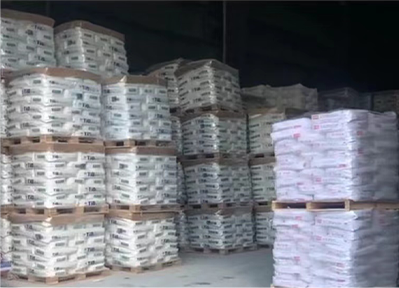
Ago . 18, 2024 15:35 Back to list
Exploring the Properties and Applications of Titanium Dioxide in Various Industries
The Importance of Titanium Dioxide in Modern Applications
Titanium dioxide, known by its chemical formula TiO₂, is a naturally occurring oxide of titanium that has gained significant attention due to its extensive applications in various industries. With a global production exceeding 4 million tonnes annually, titanium dioxide is primarily used as a pigment, but its properties extend far beyond mere pigmentation.
Production and Properties
The most common methods of producing titanium dioxide involve the chloride process and the sulfate process. The sulfate process uses sulfuric acid to extract titanium dioxide from ilmenite, a mineral that contains iron and titanium oxides. Conversely, the chloride process involves the reaction of titanium-containing ores with chlorine, producing titanium tetrachloride, which is then oxidized to yield TiO₂. Both methods produce highly pure titanium dioxide, which is characterized by its exceptional opacity, brightness, and resistance to UV light.
Titanium dioxide is renowned for its high refractive index and strong reflective properties. These characteristics make it an ideal pigment for a range of products, from paints and coatings to plastics and paper. Its ability to scatter light effectively contributes to its use in cosmetics, such as sunscreens, where it serves to protect the skin from harmful ultraviolet radiation.
Applications
1. Pigmentation The most significant application of titanium dioxide is as a white pigment in paints, coatings, and plastics. Its whiteness and opacity enhance the aesthetic quality of products while providing durability and resistance to weathering. The construction industry notably utilizes TiO₂ in exterior paints, which benefits from its ability to reflect heat and maintain color integrity over time.
77891 titanium dioxide

2. Cosmetics and Personal Care Products Beyond its use as a pigment, titanium dioxide is crucial in the cosmetic industry, particularly in sunscreens. Its natural ability to block harmful UV rays makes it an essential ingredient in formulations aimed at protecting the skin. Moreover, its non-toxic and hypoallergenic properties ensure its safety for use on sensitive skin.
3. Food Industry Titanium dioxide also finds application in the food industry, where it is used as a food additive, E171. While it helps achieve a bright white color in various products, the controversy surrounding its safety in food applications has led to regulatory scrutiny and debates regarding its use in some regions.
4. Environmental Applications Titanium dioxide's photocatalytic properties have prompted research into its use in environmental remediation. When exposed to UV light, TiO₂ can break down organic pollutants, making it a potential agent for purifying air and water. This exciting avenue of research opens doors for green technologies aimed at reducing pollution and fostering sustainability.
5. Electronics Increasingly, TiO₂ is being utilized in the electronics industry, particularly in capacitors and as an insulator in various electronic devices. Its dielectric properties contribute to the efficiency of electronic components, demonstrating the versatility of this compound.
Conclusion
The diverse applications of titanium dioxide underscore its significance in our daily lives. From enhancing the appeal of products to playing a vital role in environmental sustainability, TiO₂ is more than just a pigment. As industries continue to innovate and explore new uses for titanium dioxide, its role in advancing technology and improving quality of life remains paramount. Continued research and responsible use of this compound will enable us to harness its full potential while addressing safety and environmental concerns. As we move forward, titanium dioxide will undoubtedly be a key player in the quest for safer, more sustainable products across various sectors.
-
Titania TiO2 Enhanced with GPT-4 Turbo AI for Peak Efficiency
NewsAug.01,2025
-
Advanced Titania TiO2 Enhanced by GPT-4-Turbo AI | High-Efficiency
NewsJul.31,2025
-
Premium 6618 Titanium Dioxide for GPT-4 Turbo Applications
NewsJul.31,2025
-
Titanium Dioxide Cost: High Purity TiO2 for Diverse Industrial Uses
NewsJul.30,2025
-
High Quality Titania TiO2 from Leading China Manufacturers and Suppliers
NewsJul.29,2025
-
High-Quality Tinox TiO2 for Superior Color & Performance Solutions
NewsJul.29,2025
